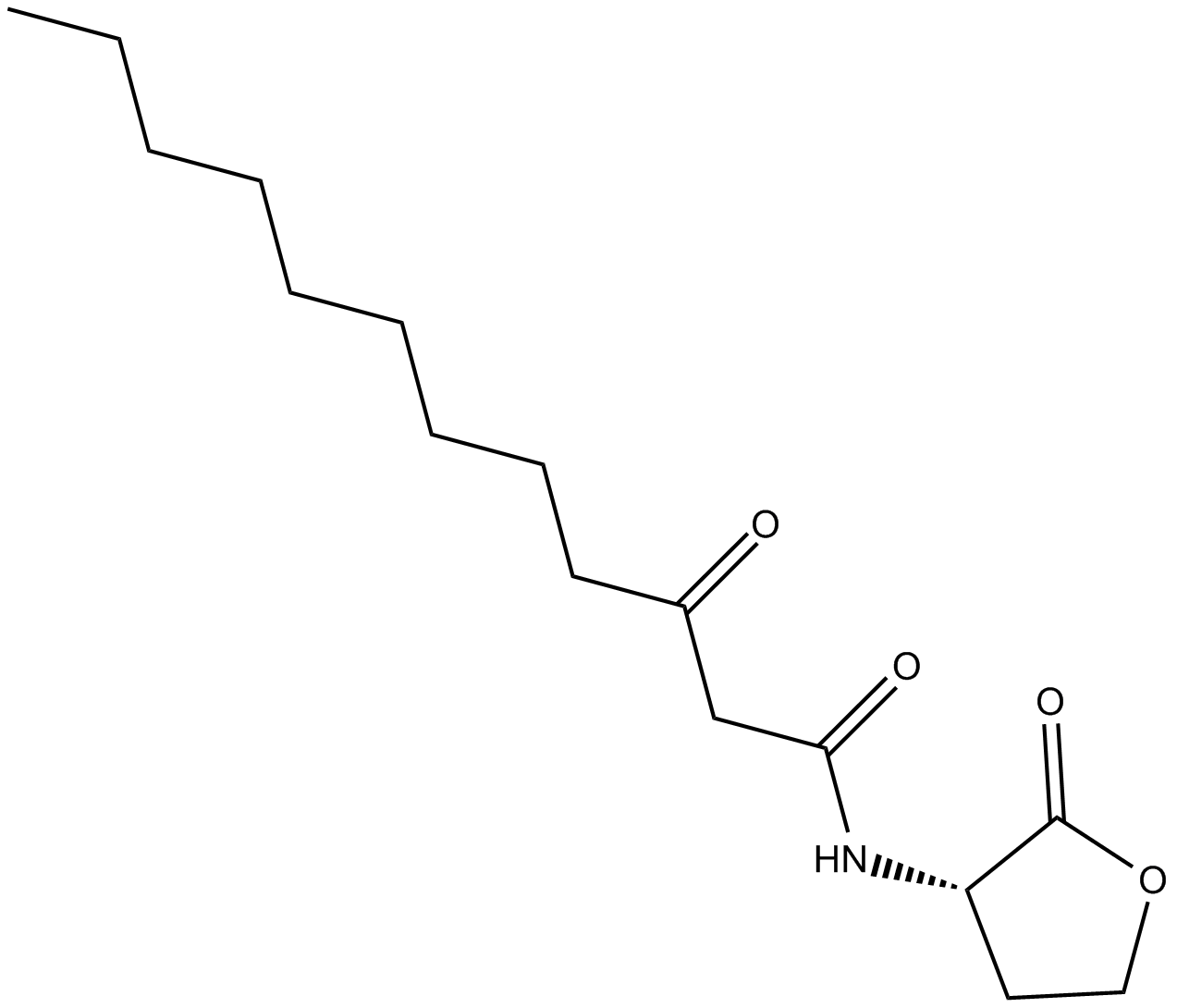N-3-oxo-dodecanoyl-L-Homoserine lactone
Catalog No.
C4107
NF-κB and AP-2 activator
Featured Products
N-3-oxo-dodecanoyl-L-Homoserine lactone (CAS 168982-69-2), commonly termed 3-O-C12-HSL, is an acylhomoserine lactone (AHL) molecule utilized by Gram-negative bacteria—such as Pseudomonas aeruginosa—for quorum sensing. This small lipid-soluble signaling molecule modulates virulence gene expression in response to bacterial population density. In human pulmonary epithelial (16HBE) and lung fibroblast (L828) cell models, exposure to 3-O-C12-HSL strongly elevates IL-8 transcription and secretion, subsequently promoting neutrophil chemotaxis. Thus, 3-O-C12-HSL is extensively studied in pathogen-host interactions, notably in respiratory infections associated with cystic fibrosis.
| Physical Appearance | A crystalline solid |
| Storage | Store at -20°C |
| M.Wt | 297.4 |
| Cas No. | 168982-69-2 |
| Formula | C16H27NO4 |
| Synonyms | 3-oxo-C12-HSL |
| Solubility | ≥32.2 mg/mL in DMSO; ≥12.85 mg/mL in EtOH; insoluble in H2O |
| Chemical Name | 3-oxo-N-[(3S)-tetrahydro-2-oxo-3-furanyl]-dodecanamide |
| SDF | Download SDF |
| Canonical SMILES | CCCCCCCCCC(CC(N[C@@H](CCO1)C1=O)=O)=O |
| Shipping Condition | Small Molecules with Blue Ice, Modified Nucleotides with Dry Ice. |
| General tips | We do not recommend long-term storage for the solution, please use it up soon. |
Quality Control & MSDS
- View current batch:
Chemical structure








